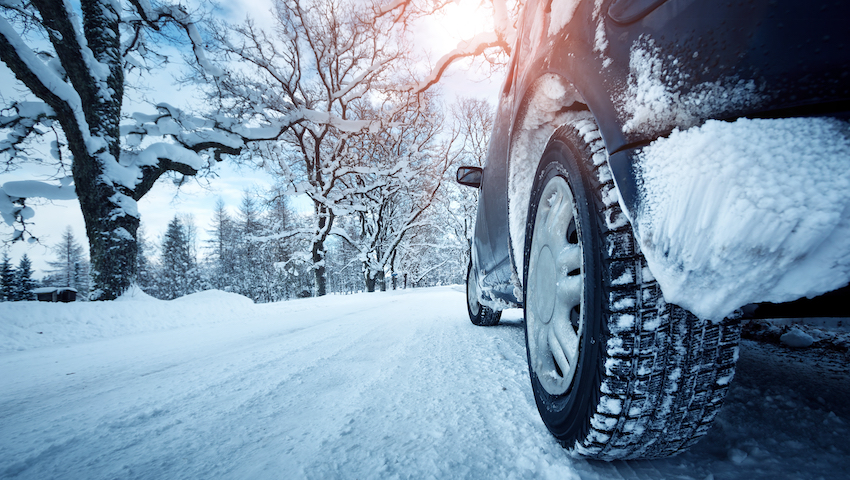How to prepare your electric car for the snow
As snow falls across the UK this week, EV Powered has prepared an essential guide on how to prepare your electric vehicle for the snow and how to drive safely in it.
Electric cars face certain challenges in the cold, from reduced ranges and batteries struggling to reach the optimum temperature. Motoring experts at LeaseElectricCar.co.uk have therefore named five top tips for drivers to look after their electric cars over the winter months to help optimise battery life, improve range and save time.
Keep battery warm
In the winter an EV’s battery will naturally get much colder and drop below the optimum temperature to run at. Keeping the batteries as warm as possible will help preserve their life and will mean less time spent warming up the car. If possible it’s a good idea for electric car owners to keep their vehicle in a garage or under a car cover to keep as much heat as possible, especially overnight when temperatures are often at their lowest.
Charging will take longer
Keep in mind that EV batteries will take longer to charge on a cold wintery day compared to the summer months. EV’s will take longer to charge in the winter when the temperature drops below the optimum temperature for batteries at 15 degrees. Prepare for a longer charge time and consider charging overnight, as not only is it cheaper, there is more time for the battery to reach its maximum charge.
Keep heating on low
Although it can be tempting to have the internal temperature of a car on high, especially when making a long journey over winter, this can actually damage the battery. Having the car heating on over winter will degrade the battery and its range, potentially meaning a charge is needed on the way. Try having the heating on at a reduced temperature, or just use heated seats and steering wheel rather than the whole car.
Preheat the battery
Most EV’s give drivers the option to preheat their vehicles. Doing this in winter is a good idea as the EV will prioritise heating up the battery ready for use, reaching the operating temperature ready for setting off. Using the EV straight after charging in the winter will also ensure that the battery is preheated.
Change driving style
Driving as smooth as possible in an EV over wintertime will help to optimise the battery life. It’s a good idea to avoid any heavy braking and accelerating which will then help to optimise the energy consumption of the EV. Driving cautiously will also help motorists to drive safely over winter with the likelihood of ice and snow on the roads. An alternative is to turn on the eco driving setting which automatically reduces the heat as well as the accelerator pedal impact.
How to drive safely in the snow
Safety campaigners RoadAngel are warning drivers to take extra care before they head out on potentially icy roads over the next week.
They are urging motorists to take steps now to ensure their vehicles are cold weather ready ahead of forecasted ice and snow in the days ahead.
Here are eight essential tips every driver should abide to in harsh snowy weather from the experts at RoadAngel:
Check tyre tread
Regularly check tyre conditions as snowy weather increases the danger of braking safely. Tyre tread depth must be at a minimum of 1.6mm to keep safe while driving. If you want to take further preventive measures, invest in winter tyres to ensure a tighter grip on the road.
Top up windscreen washer
Fill up with windscreen washer to ensure you have enough for long journeys in the snowy weather. The fluid helps to remove snow and ice while ensuring you have a clear vision of the road ahead.
Inspect brake lights
Keep on top of checking the brake bulbs to prevent any drivers from rear-ending your car. It can be easily done by slowly reversing into a wall and checking the side mirrors to see whether both red lights reflect back.
Check the fog lights
As an extra preventive measure, check to see if the fog light is working to ensure full visibility on the road. If the lights are flicking or dimly lit, this could mean the bulbs need replacing and should be fixed immediately.
Windscreen wipers
The combination of snow and rain could bend the wipers making it extremely difficult to have clear vision of the road. Before heading off in the car, remove heavy snow on the windscreen and replace damaged wipers ahead of long journeys.
Increase stopping distance
Stopping distances need to be increased by up to 10 times when driving in the snow and ice. If you’re driving up to 70mph on the motorway in these conditions, keep in mind that it’ll take over 770m to bring the car to a complete stop.
Clear vision
It’s vital to have a clear vision of the roads, especially as the earlier winter nights draw in. When the cold weather hits, make sure to pack a microfibre cloth for when you turn the heating on, as it helps to clear the condensation from the windscreen and allows for a clear view of the road.
Monitor brake conditions
Test the brakes before taking the car out, as they can become worn out if you’re pressing on them too hard. If you notice the brakes not working correctly, call the mechanic as soon as possible to prevent the chance of accidents.
